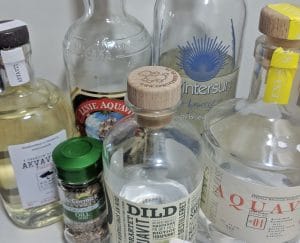“People are into botanicals and they know what they are,” Kristiane Sherry editor at the Master of Malt blog said in a recent interview “People are intrigued by them…and that’s partly borne off the gin trend.”
A lot has changed since this site launched in late 2009. Gin has gone from a niche product to an explosive segment of the drinks market whose growth trajectory has defied annual claims that it must be over. In 2018, sales were double what they were in 2016— which the press called “The Year of Gin.”
Moreover, the dialogue about how bartenders, gin-drinkers, distillers and writers has been transformed radically. Consumers are more in tune with their personal flavor preferences than ever before. They’re talking about flavors, process and as Sherry pointed out above, they’re talking about botanicals.
The gin drinking public has embraced unusual botanicals, like the widely used Lemon Myrtle or Finger Lime which until 2015 were largely unknown outside of Australia. Contemporary Gin is no longer a niche but a large and ever-growing segment of the gin category. People are enjoying spirits where juniper isn’t dominant and they’re enjoying them.
This has ruffled a lot of feathers in the industry.
But my approach has always been somewhat egalitarian. If people are enjoying things and they bring joy to their life— I don’t want to take them away. I want to celebrate this diversity and creativity. We’re in an era of unparalleled experimentation with gin.
But to their point. Some of these may well not be gin.
I understand why you would add juniper to a spirit you’re designing. If you have this vision of cardamom and vanilla, macerated in neutral grain and distilling it— you’d be best off adding some juniper to the blend. Bars have places for gin. Liquor stores have places for gin. They don’t have a place for a 40% ABV cardamom and vanilla spirit. Well perhaps except the flavored vodka section, which is a barren wasteland of industry snark and consumer dis-respect.
Kristiane Sherry added, “Flavored vodka has its connotations…which I don’t think you want to approach.” Perhaps, it’s better to add some juniper and weather the slings of the Haymans from a shelf that offers a bit more credibility with the consumer.
So how does this get us back to Aquavit? Well similar to the example above, Aquavit is produced by taking a neutral grain spirit and re-distilling it in the presence of caraway and/or dill seed. Most are white spirits but some are aged. Many include a wide range of additional botanicals beyond one of the two required to call itself an Aquavit. In short— it’s easy to think about aquavit as if gin, but replace juniper with the caraway and/or dill.
Sherry adds one more note, “Aquavit is a small category, but it’s one people are getting more interested in…I don’t think people need juniper anymore to be guided by their drinks choices.”
We’re going to review some aquavit as well.
There’s an intense overlap between gin and aquavit, not only from a process standpoint but from an affinity standpoint. People who are interested in botanically driven spirits like gin are also likely to be interested in other botanically driven spirits like aquavit.
Distiller Ben Capdevielle, creator of Big Gin said, “Gin is the godfather of botanical spirits.” Gin is a botanical spirit. And so is Aquavit. And so may well be that cardamom/vanilla example above.
We think the similarities between these categories of spirits warrant some attention in a space that’s been dedicated to the growth of botanical spirits.
We will talk about Aquavit using our flavor diagram. We’ll also review it very similarly to gin.
However, we won’t lose our gin-forward focus. Aquavit Reviews will be in their own section and The GIN is IN will remain dedicated to covering gin from around the world.
I mean it’s perhaps not a secret. I don’t believe in “Fake Gin.” I think the best way though to help preserve the category of gin isn’t through legislation and rules. Instead, it’s through the celebration and understanding that these other expressions are just as legitimate and viable. It’s our desire to put everything into a box that has forced people to contort their way into said box to be accepted; to make a living.
Let’s celebrate this sister category. Aquavit has a storied and long tradition. And furthermore, let’s recognize Aquavit as an exciting botanical spirit category that distillers can channel some of their creativity into as well.
I mean as I’ve always said— Gin is definitely in. And moreso than ever. Why not Aquavit too. Can Aquavit be in? I think it’s the future.
Hope you are excited to join us on our Aquavit journey. Even if you’re a dedicated gin fan, I hope you’re as excited as we are. A rising tide raises all boats. I think botanical spirits are here to stay.
Cheers,
Aaron K. (February 2019)

